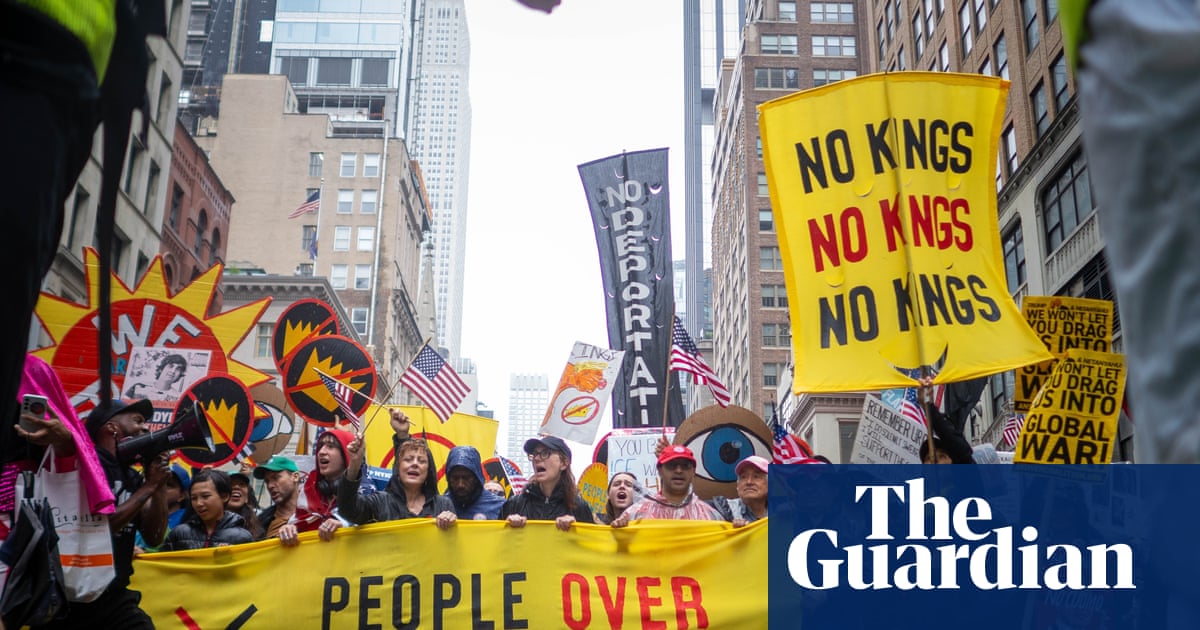Former President Donald Trump has made headlines once again with a renewed promise to intensify immigration crackdowns in major Democratic cities. This announcement follows widespread protests dubbed “No Kings,” where millions rallied against his administration, illustrating the significant public dissent surrounding his policies. The protests, held in cities like Los Angeles, Chicago, and New York, seem to have prompted a response from Trump, framing his crackdowns as a form of retribution against what he describes as the misuse of immigration for political gain.
The Complexity of Immigration Crackdowns
In a lengthy post on his Truth Social platform, Trump asserted that the cities targeted by his administration’s immigration enforcement efforts have become strongholds for Democratic power by allegedly using “illegal aliens” to bolster their voter base. It’s important to note that there is no substantial evidence backing such claims that non-citizens are voting in U.S. elections, which is prohibited by law. Yet, Trump’s rhetoric often paints a dire image of immigration, framing it as a threat to American society.
Amidst this backdrop, reports indicate that U.S. Immigration and Customs Enforcement (ICE) faces a financial crisis, being approximately $1 billion over budget and on the brink of running out of funds within the next few months. Despite this grim outlook, Trump indicated that he would allocate additional resources to the agency, should his proposed funding bill fail to secure congressional approval.
The Response to Protests
The “No Kings” protests were among the largest demonstrations against Trump’s immigration policies, particularly in Los Angeles, where around 200,000 people participated. The event not only highlighted the widespread dissatisfaction with Trump’s administration but also forced him to recalibrate his strategy. In the days leading up to these protests, Trump’s administration had ordered ICE to limit workplace immigration enforcement actions due to backlash against raids impacting industries heavily reliant on immigrant labor, such as agriculture and hospitality. However, following the protests, he appeared to shift back to a more hardline approach.
His decision to focus solely on targeting cities led by Democratic officials, while overlooking Republican-led areas, underscores a political strategy that aims to galvanize his base by intensifying partisan divides. Trump’s messaging often employs terms like "remigration," a buzzword associated with far-right rhetoric that refers to forcibly deporting immigrants or refugees back to their countries of origin—illustrating his administration’s hardline stand on immigration.
National and Local Responses
The intensity of Trump’s statements has raised questions among analysts and critics regarding the politicization of law enforcement. Observers like Chuck Todd have remarked that Trump’s attempts to use ICE as a tool for political objectives could further damage the agency’s credibility. The implications of these actions resonate deeply within communities, especially in areas that rely on immigrant labor. Farmers and business owners have voiced frustration over immigration policies that threaten their workforce, indicating that these actions may have unintended economic consequences.
Compounding these complexities are the recent military displays by Trump around the same time as these immigration announcements. During a military parade in Washington D.C., purportedly celebrating the U.S. Army’s 250th anniversary, critics pointed out that the event seemed more about showcasing Trump’s personal brand than honoring military traditions. This spectacle again highlights his tendency to blur the lines between political celebration and official military events, raising concerns about the implications such behavior could have for the military’s non-partisan role.
Looking Ahead
Trump’s announcement of an extensive immigration crackdown comes as his immigration advisor, Stephen Miller, has reportedly called for a minimum of 3,000 arrests per day. This ambitious directive indicates the administration’s intention to ramp up enforcement dramatically, stirring fears among immigrant communities nationwide.
Moreover, Trump’s framing of immigration policy as a battle against “criminal invaders” reveals a broader narrative strategy aimed at rallying hardline supporters within his base, who view immigration as a threat to national security and cultural integrity. The resultant climate of fear surrounding potential deportations has left many undocumented individuals and their families feeling vulnerable and anxious.
As America moves forward, the implications of Trump’s immigration promises will likely resonate both socially and economically. The politicization of immigration—as evidenced by the targeting of specific cities and communities—will raise critical questions about the role of law enforcement and the nature of democracy in a nation built on principles of inquiry, fairness, and inclusiveness.
In conclusion, as these developments unfold, it’s crucial for communities, policymakers, and advocates to stay informed and engaged. The dynamics of immigration policy not only shape the lives of countless individuals but also reflect the broader values and priorities of society as a whole. Public discourse and protest will remain vital in ensuring that multiple perspectives are represented in this heated conversation surrounding immigration in America.










